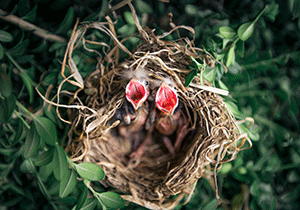
Extreme weather makeovers
Discover how the weather changes the way that some animals look
This primary resource helps children to think about the effect of the weather and change of seasons on the creatures that live in extreme weather environments. Discover how the weather changes the look of some animals. What changes does the change in weather ignite in the animals mentioned? Why does white fur help to insulate the animals? Why is climate change a problem for the Arctic fox?
Pupils will learn about extreme weather; snowy Arctic and subarctic winters, and how the weather impacts the animals that live in those conditions in our National Geographic Kids’ weather primary resource sheet.
The teaching resource can be used in study group tasks about extreme weather, as a printed handout for each pupil, or for display on the interactive whiteboard.
Activity: Divide the class into five groups and assign each group one of the animals from the resource to create a fact file about. The Fact files should include: i) Where the animal comes from; ii) What its environment / habitat is like; iii) What the weather is like there; iv) Any predators or prey; v) What it looks like in summer and winter; vi) When its coat changes; vii) Why its adaptations are necessary. Pupils could discuss and share ideas on how climate change may be affecting these animal adaptations, and then further research their theories.
N.B. The following information for mapping the resource documents to the school curriculum is specifically tailored to the English National Curriculum and Scottish Curriculum for Excellence. We are currently working to bring specifically tailored curriculum resource links for our other territories; including South Africa, Australia and New Zealand. If you have any queries about our upcoming curriculum resource links, please email: schools@ngkids.co.uk
This Geography primary resource assists with teaching the following Geography objectives from the National Curriculum:
- The national curriculum for geography aims to ensure that all pupils: understand the processes that give rise to key physical and human geographical features of the world, how these are interdependent and how they bring about spatial variation and change over time
National Curriculum Key Stage 1 Geography objective:
Pupils should be taught to:
- identify seasonal and daily weather patterns in the United Kingdom and the location of hot and cold areas of the world in relation to the Equator and the North and South Poles
National Curriculum Key Stage 2 Geography objective:
Pupils should be taught to:
- describe and understand key aspects of:
-
- physical geography, including: climate zones, biomes and vegetation belts, rivers, mountains, volcanoes and earthquakes, and the water cycle
This Geography primary resource assists with teaching the following Social Studies Early level objective from the Scottish Curriculum for Excellence:
- While learning outdoors in differing weathers, I have described and recorded the weather, its effects and how it makes me feel and can relate my recordings to the seasons.
Scottish Curriculum for Excellence First level Social Studies objective:
- By using a range of instruments, I can measure and record the weather and can discuss how weather affects my life.
- By exploring climate zones around the world, I can compare and describe how climate affects living things.
Scottish Curriculum for Excellence Second level Social Studies objective:
- By comparing my local area with a contrasting area outwith Britain, I can investigate the main features of weather and climate, discussing the impact on living things.
Scottish Curriculum for Excellence Third level Social Studies objective:
- I can investigate the relationship between climate and weather to be able to understand the causes of weather patterns within a selected climate zone.
Scottish Curriculum for Excellence Fourth level Social Studies objective:
- I can demonstrate an understanding of weather and climate by explaining the relationship between weather and air pressure.
Download primary resource
More Like

Signs of Spring

Dippy the dinosaur’s big adventure









LEAVE A COMMENT
THANK YOU
Your comment will be checked and approved shortly.
WELL DONE,
YOUR COMMENT
HAS BEEN ADDED!
COMMENTS
CUSTOMIZE YOUR AVATAR